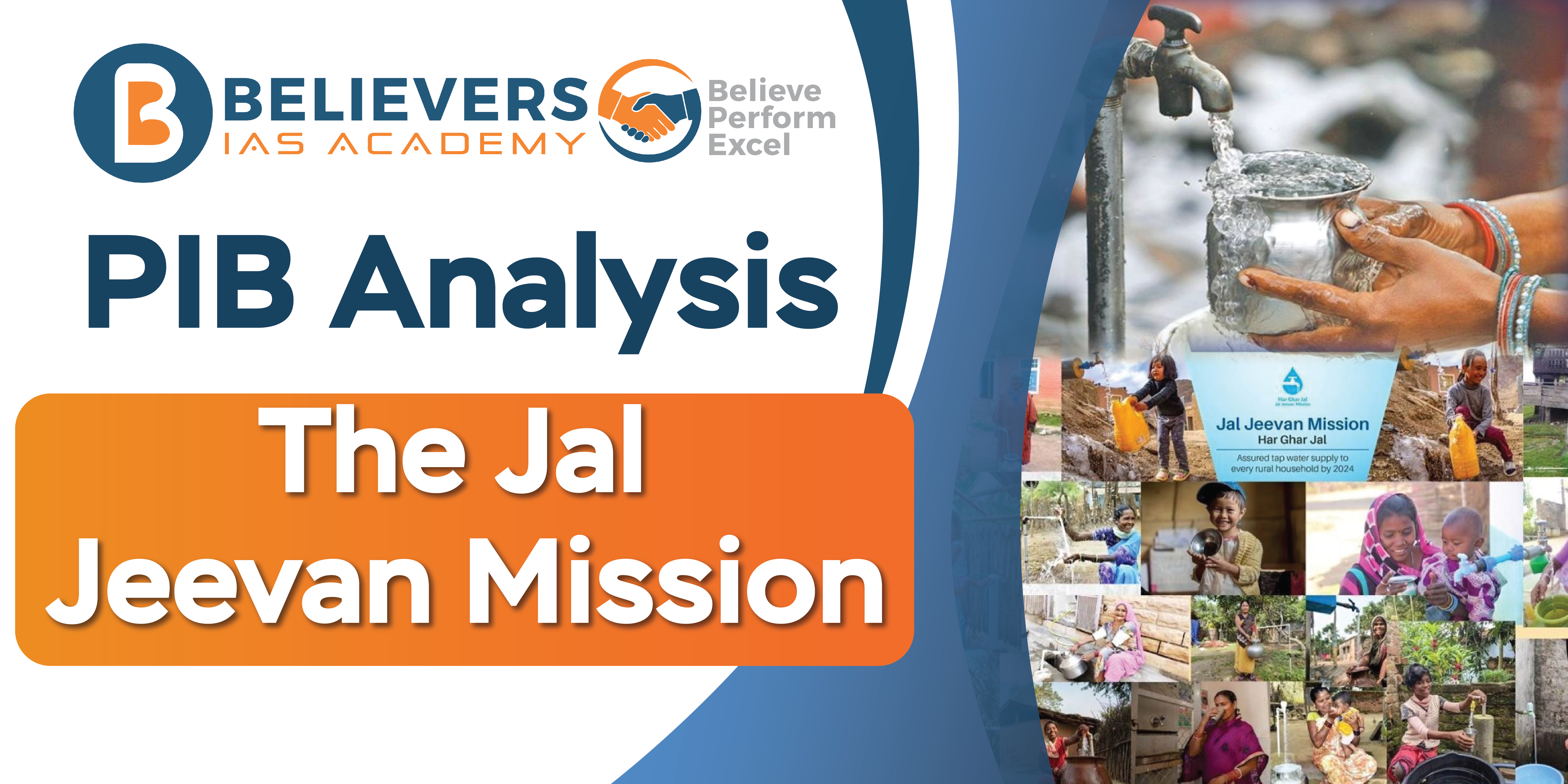The Jal Jeevan Mission
Context:
The Jal Jeevan Mission (JJM) achieved another milestone of providing tap water connections to 13 Crore rural households. Working with ‘speed and scale’, the life changing mission has increased the rural tap connection coverage from only 3.23 Crore households at the start of the Mission in August, 2019 to 13 crore in just 4 years.
Relevance:
GS-03 (Government Policies and Interventions)
Jal Jeevan Mission:
- Jal Jeevan Mission (JJM) was launched in 2019.
- It was launched by the Jal Shakti Ministry.
- It is a comprehensive initiative aimed at ensuring the supply of 55 liters of water per person per day to every rural household through Functional Household Tap Connections (FHTC) by the year 2024.
Objectives:
- Enhancing Water Supply connections in rural areas.
- Promoting Sustainable Agriculture through the judicious and responsible use of water resources.
- It encourages the conjunctive use of conserved water resources, emphasizing both augmentation and efficient management of drinking water sources.
- It also addresses the treatment and reuse of greywater.
Key Features:
- Integrated Management: The mission adopts a holistic approach by focusing on integrated demand and supply-side management of water at the local level. This includes creating local infrastructure for source sustainability, such as rainwater harvesting, groundwater recharge, and household wastewater management for reuse.
- Collaboration with Government Programs: JJM collaborates with other government programs and schemes to ensure the convergence of efforts for maximum impact.
- Community-Centric Approach: At the core of JJM is a community-based approach to water management. It involves significant Information, Education, and Communication (IEC) efforts to engage and educate communities.
Implementation and funding:
- Paani Samitis: Village-level water supply systems are planned, implemented, managed, operated, and maintained by Paani Samitis. These committees typically consist of 10-15 members, with a minimum of 50% representation from women. Members include individuals from Self-Help Groups, Accredited Social and Health Workers, Anganwadi teachers, and others.
- Village Action Plan: Paani Samitis prepare a comprehensive village action plan by pooling together available village resources. This plan is subject to approval in a Gram Sabha meeting before its execution.
- For Himalayan and North-Eastern States the funding is shared between the Centre and these states in a 90:10 ratio.
- For states other than those in the Himalayan and North-Eastern regions, the funding is shared on a 50:50 basis between the Centre and the state governments.
- Union Territories receive 100% funding from the Centre for implementing JJM.




